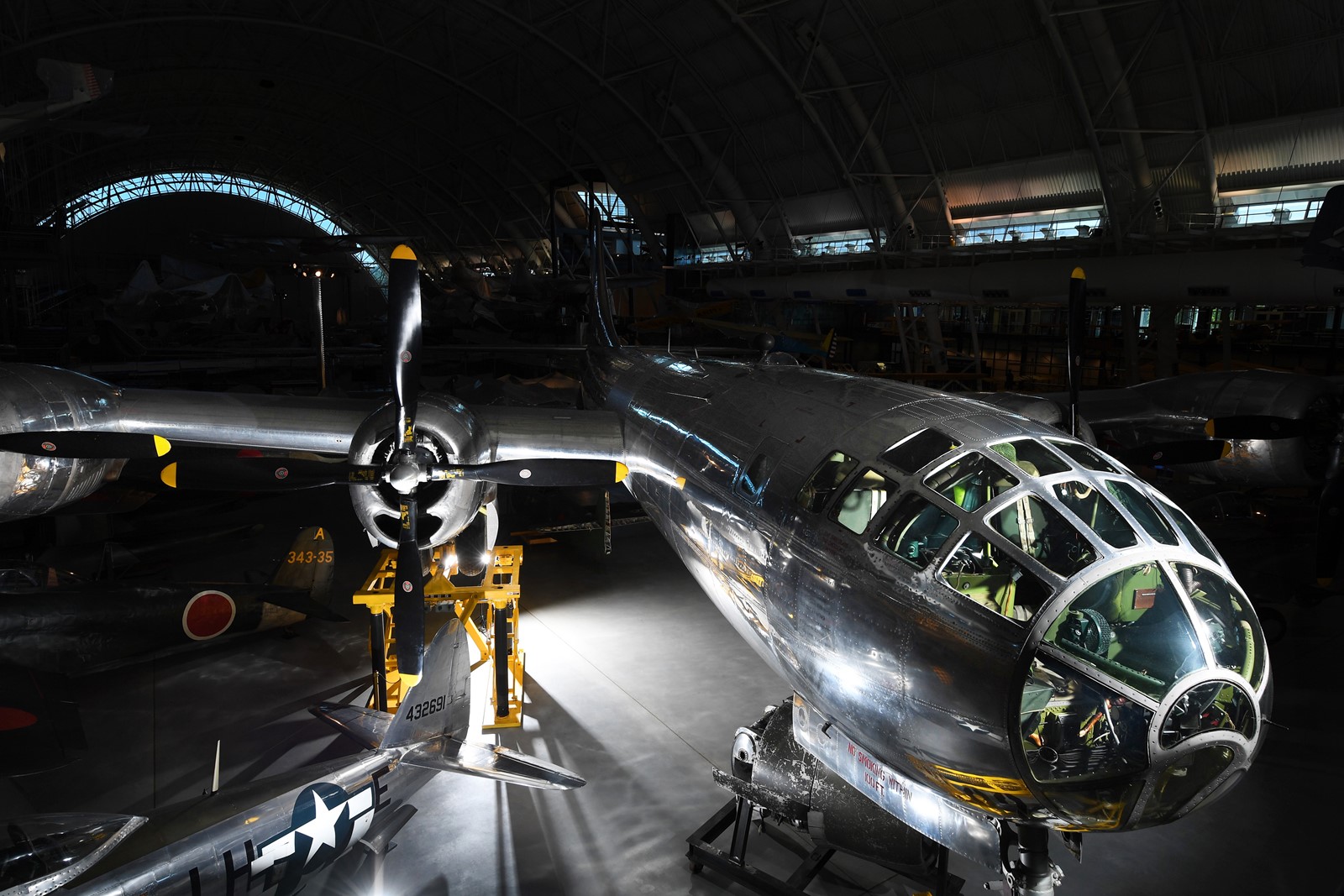
It was born on May 18, 1945, at the assembly plant of the Glenn L. Martin Company outside Omaha. Designation: Boeing B-29 Superfortress. Weight: 74,500 pounds. Length: 99 feet. Wingspan: 141 feet. Name … well, it didn’t have a name. It was known only by its serial number: 44-86292.
No. 44-86292 was transferred from Omaha to Wendover, Utah, to join the 509th Composite Group, the unit tasked with dropping atomic bombs on Japan.
One of 15 B-29s modified for the purpose, its bomb bay was reconfigured to carry one very large weapon. After training, the plane was flown across the Pacific to Tinian Island and selected by the 509th’s commander, Col. Paul Tibbets, to deliver the first A-bomb. It was only then, hours before takeoff, that N0. 44-86292 was given a name. Tibbets christened it after his mother.
The name of the plane that would carry the most terrible weapon in history became an expression of a son’s love. It was painted in big black letters on its nose: Enola Gay.
Eighty years ago this summer, on Aug. 6, 1945, Enola Gay with Tibbets at the controls dropped the first atomic bomb on Hiroshima, annihilating the city. It flew again, with a different crew, three days later, in support of the second atomic mission, radioing back weather conditions over the primary target, Kokura. When it reported heavy cloud cover obscuring that city, the plane carrying the bomb proceeded to the secondary target, Nagasaki. Not many remember the name of that second atomic bomb plane. It was Bockscar. Japan announced its surrender on Aug. 15.
Enola Gay was employed once more in the Pacific after the war, in support of the first atomic bomb test over Bikini Atoll on July 1, 1946. It was then returned to the United States and donated to the Smithsonian in 1949. Americans overwhelmingly supported the use of the bomb against Japan in the days after. It was seen as saving countless lives, both American and Japanese, by hastening the end of the war. The plane that dropped it was revered as a proud deliverer of victory and peace.
And then it sat, neglected, for 35 years. Too large to fit into any existing museum, Enola Gay was left parked in the open at Pyote Air Force Base in Texas, then at Andrews Air Force Base outside Washington, weathered by the elements and scavenged by souvenir hunters. To save it from further deterioration, it was disassembled in 1960 and moved into a warehouse near Andrews to await the completion of the National Air and Space Museum the Smithsonian was planning.
But the Vietnam War intervened and attitudes started changing.
In addition to protesting this new war, some began questioning the use of the atomic bomb against Japan a generation before. Had it really been necessary? Or worse, was it a crime? To avoid contention, Smithsonian planners did not include Enola Gay when the museum opened in 1976. The plane was left in its warehouse, broken in pieces, gathering dust.
The neglect of an important artifact frustrated veterans groups, who lobbied to have it restored and put on display. The museum began a project in 1984 to return Enola Gay to pristine condition.
A draft script for the exhibit was prepared as the work neared completion in the early 1990s. It told a starkly different story of the bomb and the war than what veterans and many Americans believed. For example: “For most Americans … it was a war of vengeance. For most Japanese, it was a war to defend their unique culture against Western imperialism.”
The script was called unbalanced and politicized when distributed for comment. “I would leave the exhibit with the strong feeling that Americans are bloodthirsty, racist killers,” concluded the museum’s former deputy director Donald Lopez, a World War II veteran. The backlash was so intense that congressional hearings were held and the National Air and Space Museum director and the Smithsonian secretary both resigned. When the Enola Gay exhibit opened in June 1995, all contextual material was stripped away, leaving only the plane.
Enola Gay was moved to the Smithsonian’s Udvar-Hazy Center in Chantilly, Virginia, in 2003.
The opening was disrupted by protesters holding photographs of Hiroshima bomb casualties and throwing cans of red paint, one of which dented the plane. Enola Gay remains there today on permanent display, its pivotal role in the Second World War confined to a single sentence: “On 6 August 1945, this Martin-built B-29-45-MO dropped the first atomic weapon used in combat on Hiroshima, Japan.” Nothing more dare be said. The historic aircraft is stuck between opposing forces in a cultural war, revered by some as a symbol of American ingenuity, heroism, prowess and victory, reviled by others as an artifact of hateful destruction.
When Tibbets christened No. 44-86292 after his mother, he thought her name had been Native American in origin. Years later, he learned it came from a novel his grandfather had read, Mary Young Ridenbaugh’s “Enola; or, Her Fatal Mistake.”
Toward the end of the tragic story, after losing two husbands, the heroine muses: “In calling me by the strange name of ‘Enola,’ I wonder if my dear departed parents received a glimpse of the future life of their child … for truly I am alone.”
Enola. It was “alone,” spelled backward.
Samuel Hawley is the author of “The Imjin War” and the forthcoming “Daikon.”


 PREVIOUS ARTICLE
PREVIOUS ARTICLE
